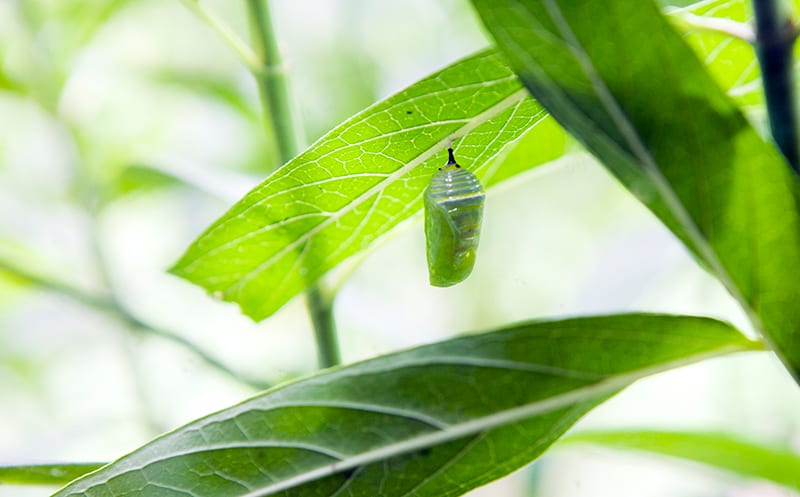
Happy August! As you enjoy the final month of summer vacation, and perhaps do a little watering, stop to look around. Hopefully, you are seeing Monarch butterflies – we are entering peak abundance time and should take note of where we see them and especially, why…
Milkweed, Monarchs, and Maine
As you hopefully know, we welcome the remaining butterflies from the third generation of the year here in Maine each mid- to late-summer, ideally coinciding with the blooming of our three native species of milkweed. These butterflies will look for nectar (any flower will do), mates, and places to lay eggs on a milkweed plant. Those eggs will hatch, the caterpillars will eat milkweed leaves and grow for two weeks, then climb off to find a place to pupate (make a chrysalis). Once they find a sturdy leaf or overhang, they hang upside-down and molt into a chrysalis. Two weeks later, adult Monarch butterflies emerge to stiffen their wings and start migrating to Mexico. This is all happening in backyards, gardens, parks and fields around us right now!


Maine Audubon has seed-grown Swamp milkweed and Butterflyweed, as well as numerous other nectar plants adult Monarchs love, for sale at the Gilsland Farm Nature Store. Some of our milkweed plants even have caterpillars on them!
What you can do at home
Two words for August: pay attention. Blooming is the easiest time to ID your plants and see who visits them. Check out this video of a Snowberry Clearwing Moth (one of two species of “Hummingbird Moths” that occur in Maine) nectaring on Monarda fistulosa bought from Maine Audubon and growing in Portland.
We’d love to hear about seedlings you took home from our various Native Plants Sales this spring and summer. Are they growing? Did they attract anything interesting? Let us know! You can also go a step farther and start your own iNaturalist inventory project.
